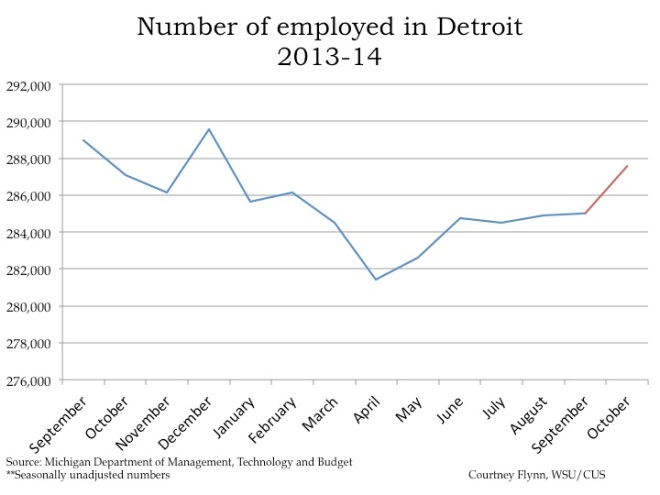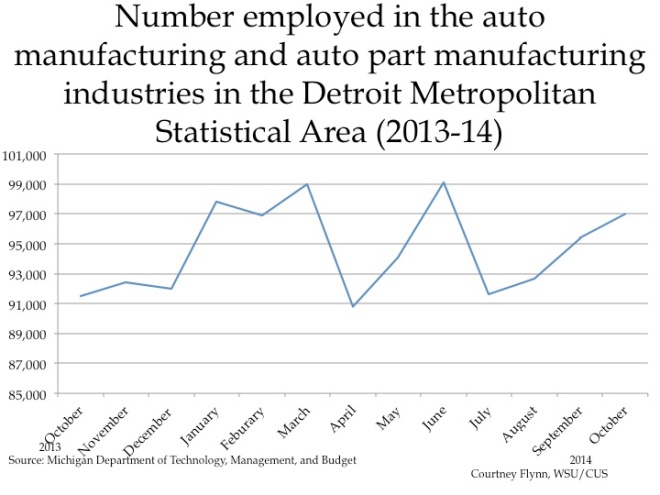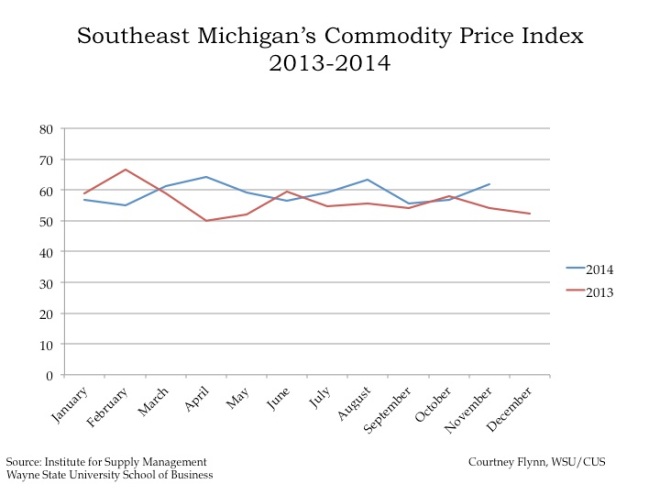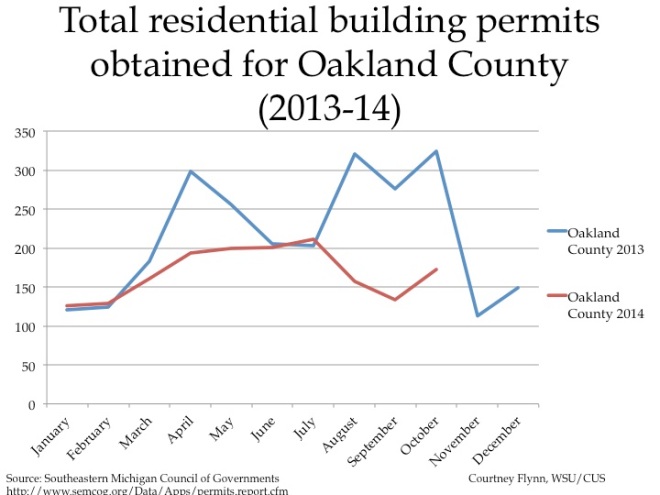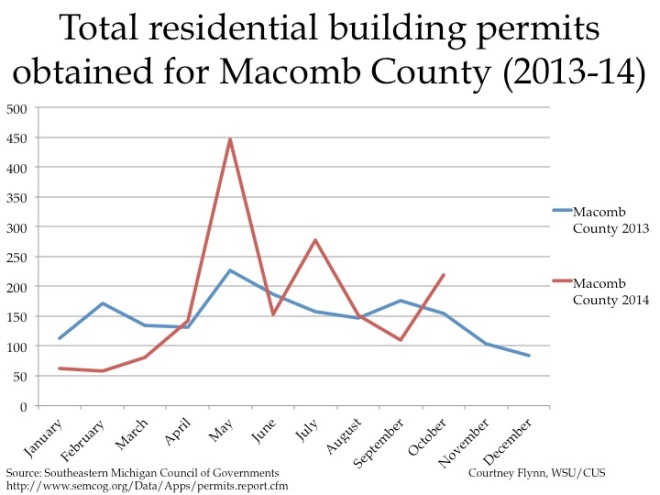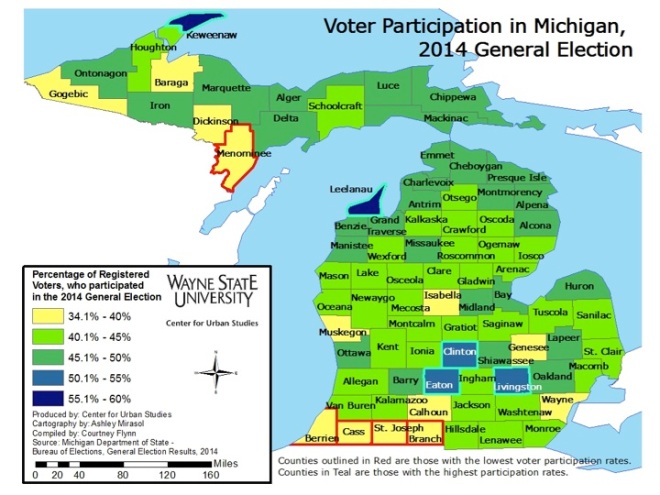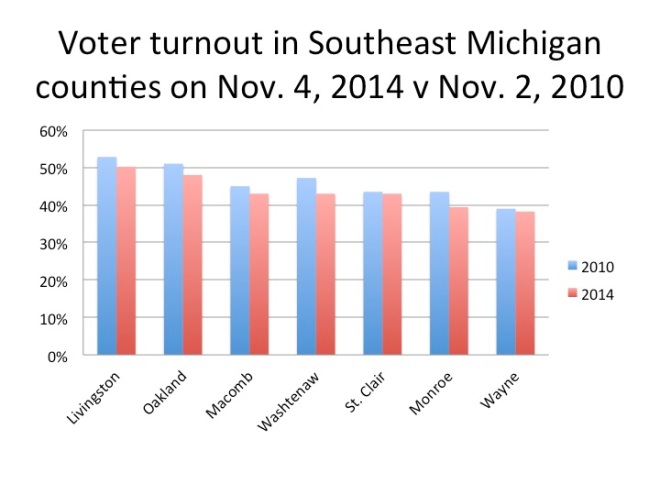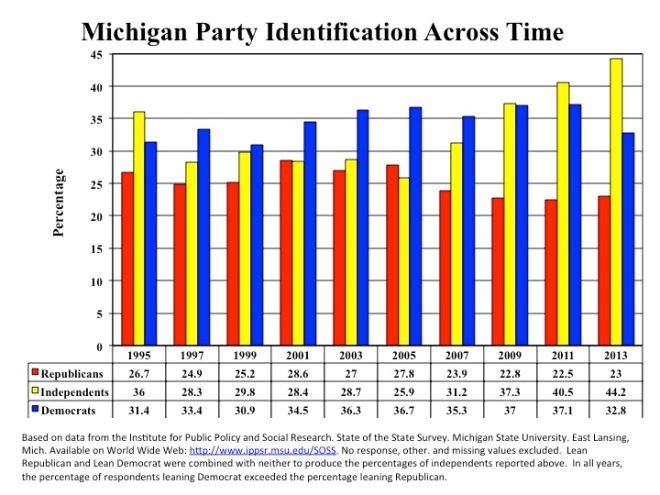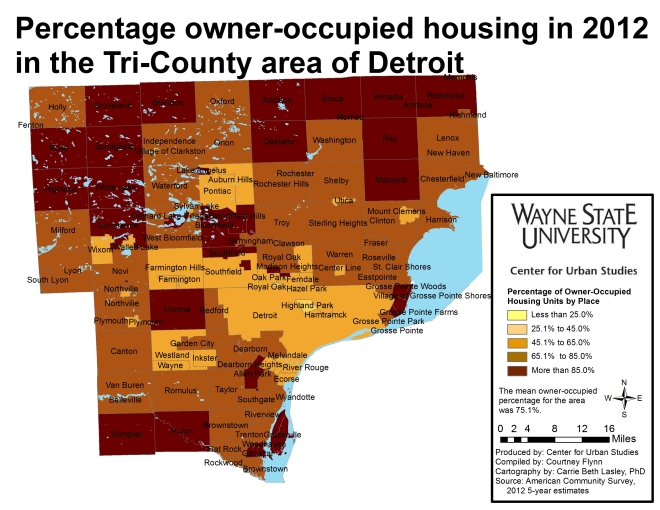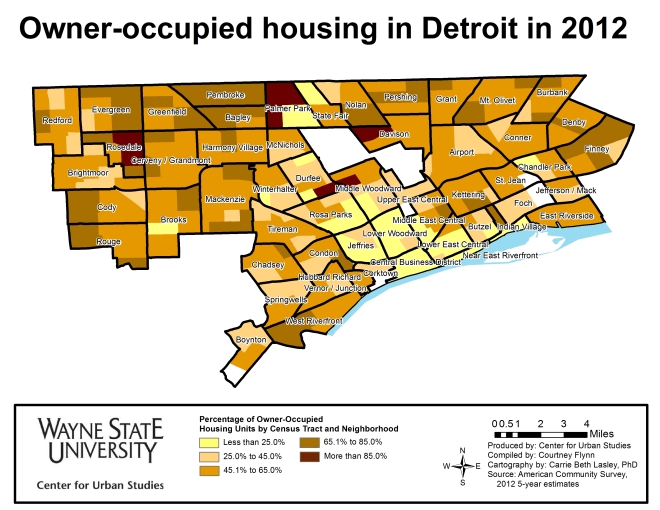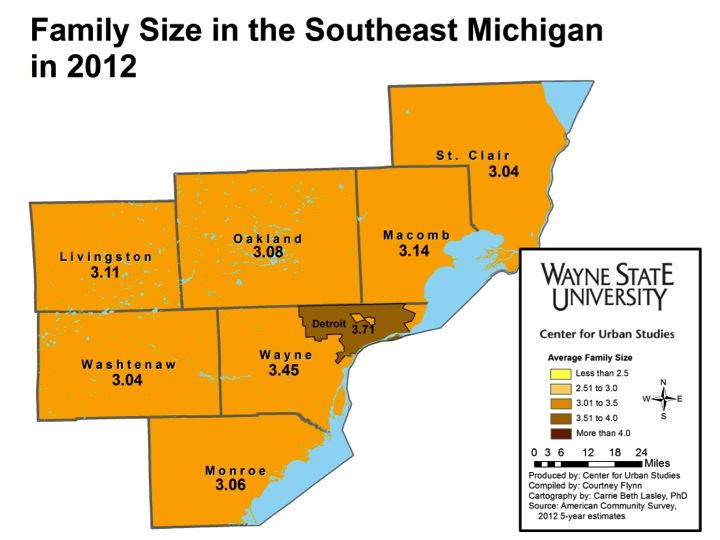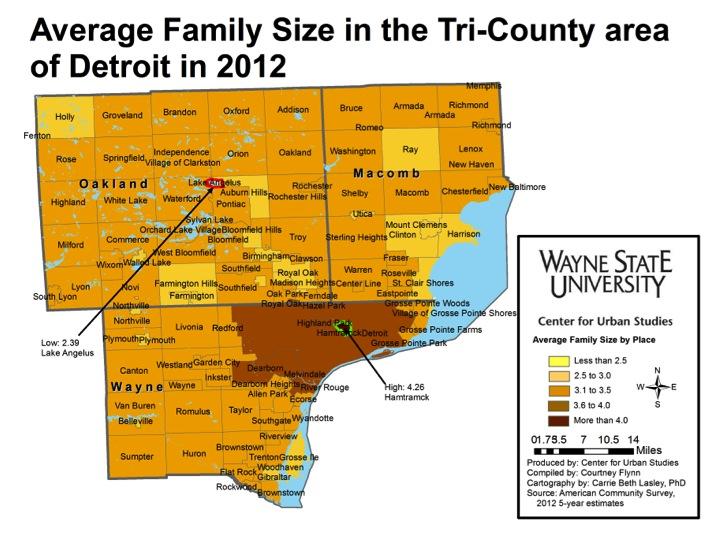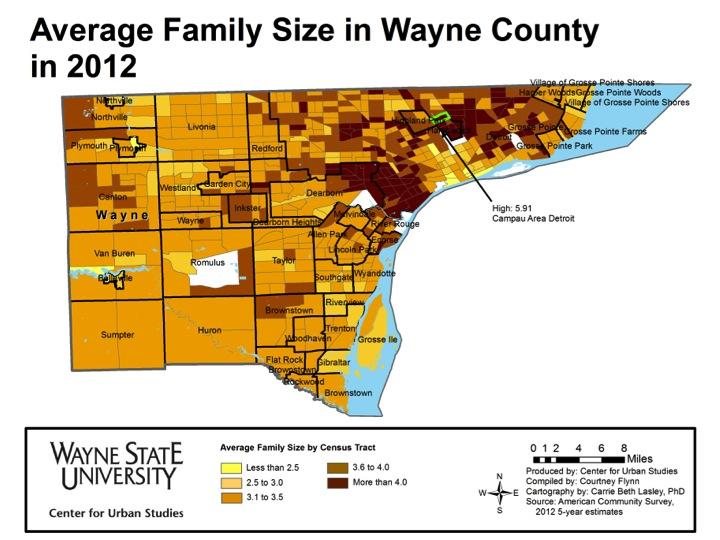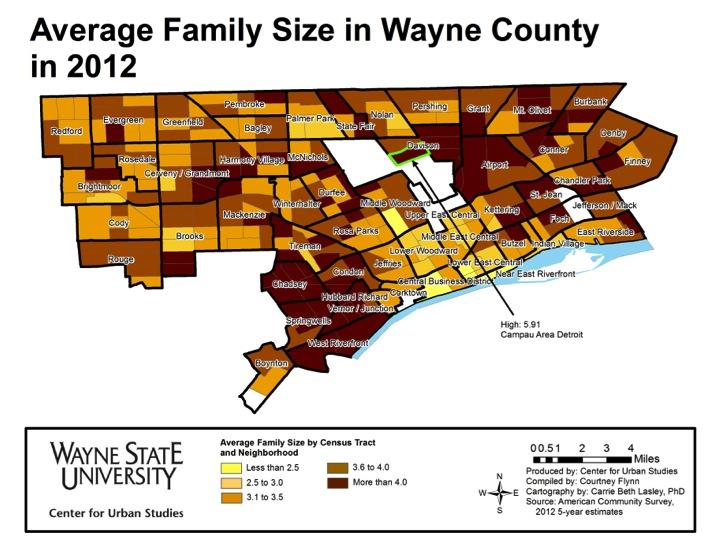- From September 2014 to October 2014, the unemployment rate across the state and in the City of Detroit’s increased (monthly);
- The Purchasing Manager’s Index for Southeast Michigan increased from October 2014 to November 2014 (monthly);
- Commodity Price Index decreased from October 2014 to November 2014 for Southeast Michigan (monthly);
- Macomb and Oakland counties experienced increased in the number of monthly building permits pulled; Wayne County experienced a decrease.
- Standard and Poor’s Case-Shiller Home Price Index for the Detroit Metropolitan Statistical Area shows home prices have been decreasing since May.
According to the most recent data provided by the Michigan Department of Technology, Management, and Budget, the unemployment rate for the state of Michigan increased from 6.7 percent in September to 7.1 percent in October. During this same period, unemployment in the City of Detroit increased from 14.9 to 15.1 percent. Detroit’s unemployment rate has been increasing since August 2014; at that time it was 14.6 percent.
From September to October of 2014, the number of people employed in the City of Detroit increased by 2,557, leading to a total of 287,575 people employed in October.
The above chart shows the number of people employed in the auto manufacturing industry in the Detroit Metropolitan Statistical Area (MSA) (Detroit-Warren-Livonia) from October 2013 to October 2014. Since July 2014, employment in this industry has increased by 5,400 to 97,000 in October 2014.
The Purchasing Manger’s Index (PMI) is a composite index derived from five indicators of economic activity: new orders, production, employment, supplier deliveries, and inventories. A PMI above 50 means the economy is expanding.
According to the most recent data released on Southeast Michigan’s Purchasing Manager’s Index, the PMI for November was 56.8, an increase of 1.9 points from the prior month, but also a decrease of 1.5 points from this time last year.
The Commodity Price Index, which is a weighted average of selected commodity prices, was recorded at 61.8 points in November, which was 7.4 points lower than the previous month and 7.4 points higher than a year ago.
The above charts show the number of residential building permits obtained each month in Oakland, Macomb, and Wayne counties from January 2013 until October 2014. These numbers are reported by local municipalities to the Southeastern Michigan Council of Governments and include single-family units, two-family units, attached condos, and multi-family units.
Oakland and Macomb counties experienced increases in the number of building permits pulled from September 2014 to October 2014. Oakland County issued 173 permits in October, an increase of 39 compared to September, but a decrease of 151 compared to October 2013.
Macomb County issued 219 permits in October 2014, an increase of 119 compared to September 2014 and 65 more permits than it issued in October 2013. Compared to September 2014 in which they pulled 62 permits, Wayne County pulled seven less building permits in October of this year (55). This is three more than the number pulled for the county in October 2013.
The above charts show the Standard and Poor’s Case-Shiller Home Price Index for the Detroit Metropolitan Statistical Area. The index includes the price for homes that have sold but does not include the price of new home construction, condos, or homes that have been remodeled.
According to the index, the average price of single-family dwellings sold in Metro Detroit was $95,070 in September 2014. This was an increase of approximately $5,020 from the average price in September 2013. Since May, prices have decreased by $3,820.

